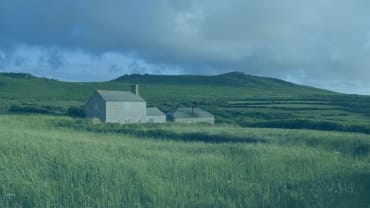The Scottish Government's program of legislation affecting the rural sector continues at pace in 2024. The Wildlife Management and Muirburn Bill and The Agriculture and Rural Communities (Scotland) Bill have been published, and further developments are pending on crofting reform, land reform and housing. Hot on the heels of all this, the consultation on managing deer for climate and nature has recently been launched. This is part of a wider consultation exercise designed to feed into the upcoming Natural Environment Bill which is currently expected in late summer 2024.
Deer management can be an emotive topic for some in the Highlands and the consultation is likely to receive responses across a very wide spectrum of viewpoints.
The consultation itself has been arranged under six broad themes:
- Enhancing the Natural Environment,
- Compulsory Powers and Compliance,
- Deer Welfare,
- Changes to close seasons,
- Venison and
- Kept and farmed deer.
Theme one introduces a proposal for a new Deer Management Nature Restoration Order aimed tailoring deer management powers in certain geographical locations. Theme two is about giving NatureScot added compliance and enforcement powers. Protections designed to balance out the welfare of wild deer (such as preventing the use of Shotguns to kill wild deer) are covered in Theme three. Theme four introduces proposals for an amended close season for hinds and scrapping of close seasons for stags. Theme five covers proposed changes to licencing of game dealers and similar matters and theme six proposes additional controls relating to farmed and other kept deer including in relation to their interaction with wild deer and their impact on the natural environment.
It will be interesting to see the varied responses but it is anticipated that changes to the close seasons and the more wide-ranging powers granted to NatureScot under a DMNRO will be a focus of responses.
The Highlands has always had a good tradition of collaborative deer management with currently over 40 upland deer management groups in operation. However, the overall attitude to deer and the corresponding approach to their management has perhaps changed in recent years with an increased focus among many Highland land managers on nature restoration, natural capital and biodiversity increase. Often, land which is managed for nature restoration is immediately adjacent to land that is managed for traditional sporting activity and the approach to deer management across those areas is not always completely aligned.
It is clear to see why a traditional sporting estate, where a large proportion of their income comes from deer stalking, might view increased deer management (and in particular, increased deer culling) on a neighbouring estate as a potential threat to their business. It is also understandable how an estate focused on nature restoration might view traditional deer management methods as inadequate to sufficiently reduce deer numbers to a level that allows them to achieve their aims. Deer after all pay little heed to boundary lines on title deeds and enclosing huge areas of Scotland in deer fencing is not necessarily practical or beneficial.
It is this juxtaposition that now makes the management of red deer (although the consultation is not limited to red deer in the Highlands) such an emotive subject and why the ongoing is very important and any Bill that flows from it will be doing well to find the right balance between competing interests and will be scrutinised closely by interested parties all sides of the debate.
It is worth noting too that other species of deer, such as roe deer, do not have the same background of active co-operative management as red deer, other than disparate low ground shoots largely to manage roe deer damage on farmland or woodland. It is recognised that low ground deer, such as roe deer, and red deer coming down off the hill, are an increasing issue that also needs to be addressed, particularly as woodland planting is likely to increase in farming areas.
The consultation is open for responses until 29 March 2024 and we would certainly encourage all interested parties to take part to ensure their viewpoint is taken into account.
Contributors
Partner
Partner













